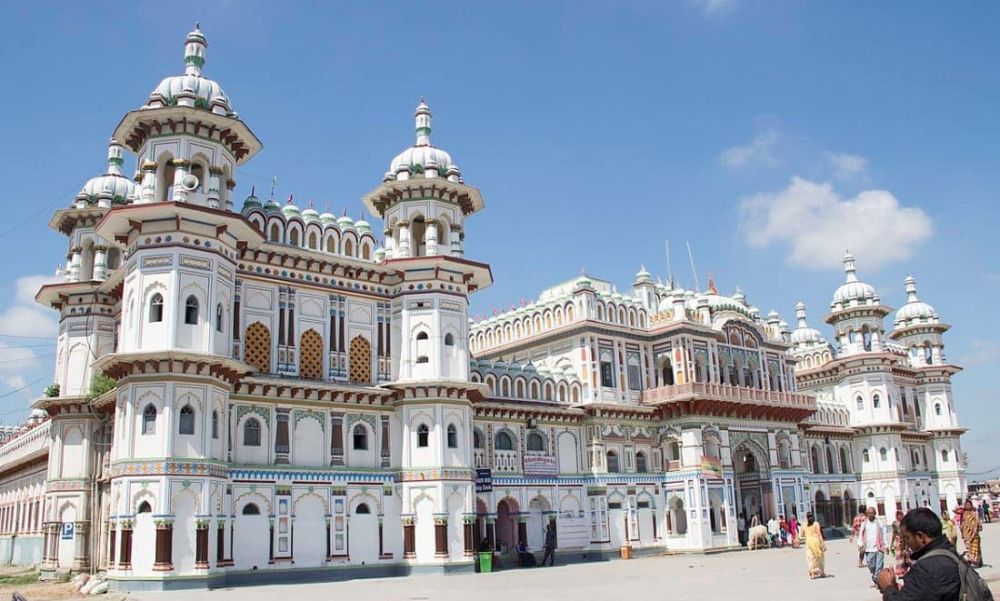

The ancient city of Janakpur in Nepal is deeply intertwined with the epic narrative of the Ramayana, which makes the Ram Mandir one of its most significant cultural and religious landmarks. The temple is dedicated to Lord Ram, an avatar of the Hindu god Vishnu, whose story is told in the Ramayana. Janakpur itself is heralded as the birthplace of Sita, the consort of Lord Ram and an avatar of the goddess Lakshmi.
The history of tourism in Janakpur is linked to the Ramayana trail that has attracted devotees for centuries. The Ram Mandir has been a pivotal destination for pilgrimages, evidencing a long history of religious tourism. As the temple holds immense religious importance not only for the followers of Hinduism but also for people intrigued by the cultural heritage of the Indian Subcontinent, it has consistently drawn tourists interested in the historical and spiritual significance of the area.
The original Ram Mandir was built around the 17th century but has been renovated and reconstructed over time. In recent years, the Nepalese government and the local community have taken notable steps to preserve the religious monuments and enhance the tourism facilities in Janakpur to cater to the increasing number of domestic and international tourists.
In the latest tourism trends, there has been an increase in "spiritual tourism," where people not only seek religious fulfillment but also look to understand the cultural essence of sacred sites. Ram Mandir, being a part of the Ramayana circuit, benefits from this trend as it offers visitors a chance to immerse in devotional activities, explore ancient architecture, and witness the rituals and festivities that take place.
Another trend is the growth of eco-friendly tourism, influencing the facilities around Ram Mandir and Janakpur to promote sustainability. Efforts are being made to provide amenities that honor the environment and preserve the sacredness of the site. This includes the upkeep of the surrounding gardens and the cleanliness drives in the city.
Additionally, there's a focus on improving connectivity and infrastructure to give tourists better access to the area. This includes upgrading roads, improving accommodation facilities, and providing more information and guides to enhance the overall visitor experience. Moreover, the celebration of festivals like Vivah Panchami, the re-enactment of Sita-Ram’s wedding, attracts thousands of visitors and showcases the temple’s grandeur and cultural importance.
As a central point for many pilgrimages, Ram Mandir has significantly influenced the local economy and social life in Janakpur. With tourism being a substantial part of Janakpur’s revenue, the temple has played a crucial role in the development of local businesses and the hospitality sector, promoting cultural exchanges and generating employment opportunities.
The temple's significance goes beyond just its religious aspects. It is a beacon for cultural and heritage tourism, offering insights into ancient art and architecture for history enthusiasts. The educational impact is profound as well, with scholars and students from around the world visiting the site to conduct research and studies on Indic traditions and mythologies.
The combined efforts of the community and the government have put Ram Mandir on the map not only as a spiritual center but also as a destination that represents the fusion of divine heritage and natural beauty, making it an all-encompassing experience for tourists from all walks of life.